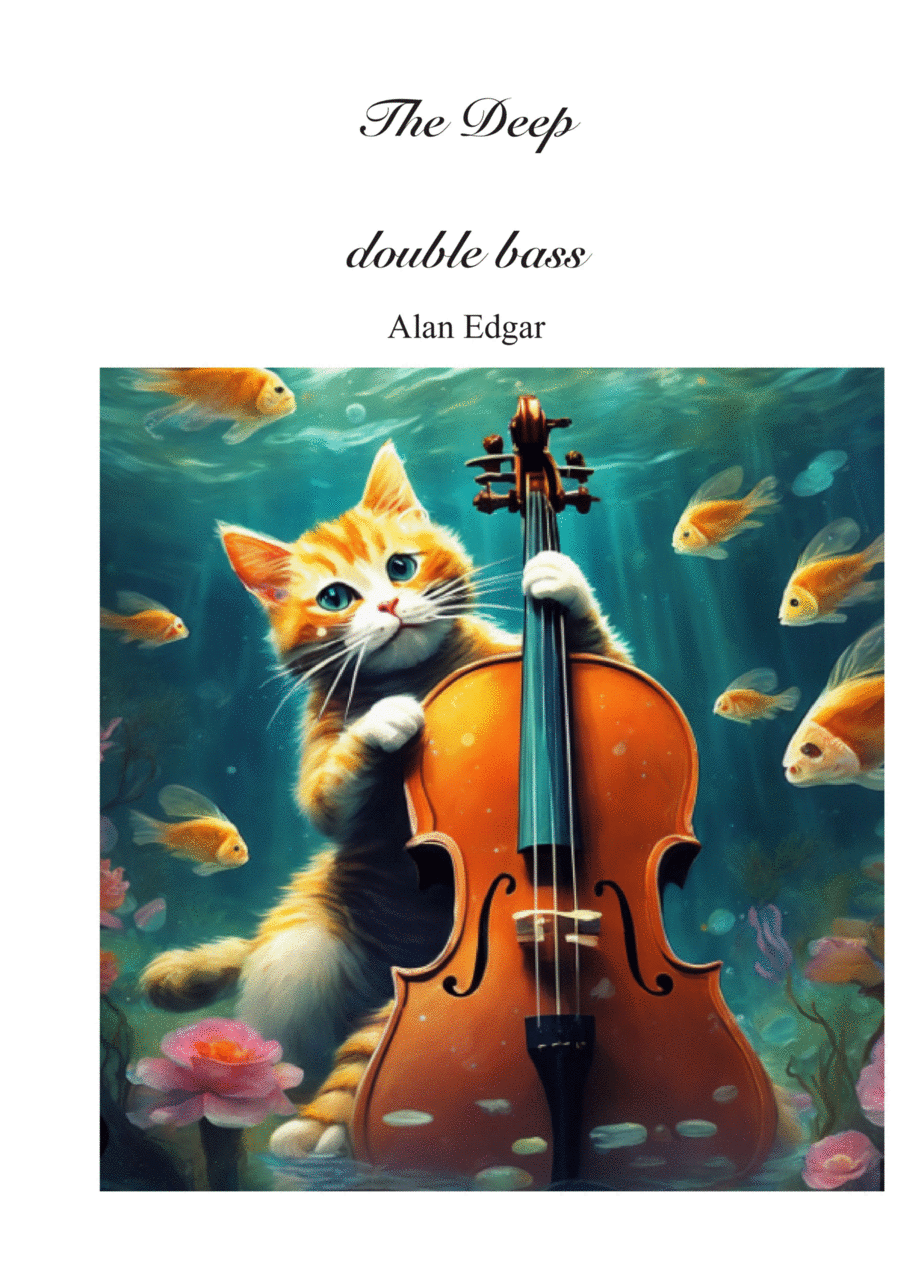Double Bass,String Bass Solo - Digital Download SKU: A0.1347908 Composed by Alan Edgar. 21st Century. Individual part. 10 pages. Alan Edgar Ted Moon #932722. Published by Alan Edgar Ted Moon (A0.1347908). Jacques Cousteau, Father of the Aqualung, wrote: The sea, once it casts its spell, holds one in its net of wonder for ever.This piece, for virtuoso double bass, imagines a scuba-diver encountering large animals, and consists of a suite of short depictions of animals in the form of variations on a melody plus a recurrent new melody representing the diver's smooth movements and bubbles. The variations are: Lobster Jazz Waltz, Sea-anemone Belly-dance, Tuna Tune, Luminous Light Show, Dolphin Fling, Jaws Serial and Blues Whale Pavane.The piece lasts about eight minutes with repeats.TECHNICAL NOTE The C harmonics will be a pip flat--they are only bursting bubbles anyway!Scuba Fins tries to feel the quiet calmness and agelessness of the underwater world, using the ancient and universal major pentatonic scale C,D,E, G,A ,C. The rhythm is mostly steady and simple, but triplets indicate the occasional extra effort. Now and again, he glances down at the infinite depths. Tintinnabulation and soft staccatissimo arpeggios represent the bubbles. Lobster Waltz is a jazz waltz with many staccato notes and leaps representing the many appendages and the tangle of lively giant crustaceans.Sea-anemone Belly-Dance pictures the soft body and tentacles swaying under the waves, using the Arabic scale Shad 'Araban, roughly G,Ab, B,C,D,Eb,F#,G and influenced by a dance to the folk tune known as Bint El-Salabiya.Tuna Tune is a quick moto perpetuo in the cheerful major mode, septuple time, the rapid rise and fall of the phrases and of volume reflecting the powerful shoal's unpredictable, ceaseless movements, approaching and retreating.Dolphin Fling is a stathspey, or highland fling, using the major mode and typical dance rhythms including the Scotch snap to depict the weighty but intelligent dolphins enjoying their leisure time and perhaps dancing with the diver.Jaws Serial reminds us of the fear a shark generates, using the dissonant 12-note serial mode and unpredictable leaps and pauses. The opening slow trill will chill you as it invokes the Jaws film theme by John Williams. You might even hear the diver's heart sink and the snap pizzicato of the teeth snapping. The prime row is the nearest possible to the original theme: Bb, Ab, F, Eb, B, C, E, G, Db, D, Gb.A, but I have followed the contours of the main themes. Blues Whale is a pavane, a slow, stately processional incorporating the typical renaissance drum rhythm. and using a blues scale, G, A, Bb, C, C#, D, F, G, and an implied 12-bar minor blues harmony.
